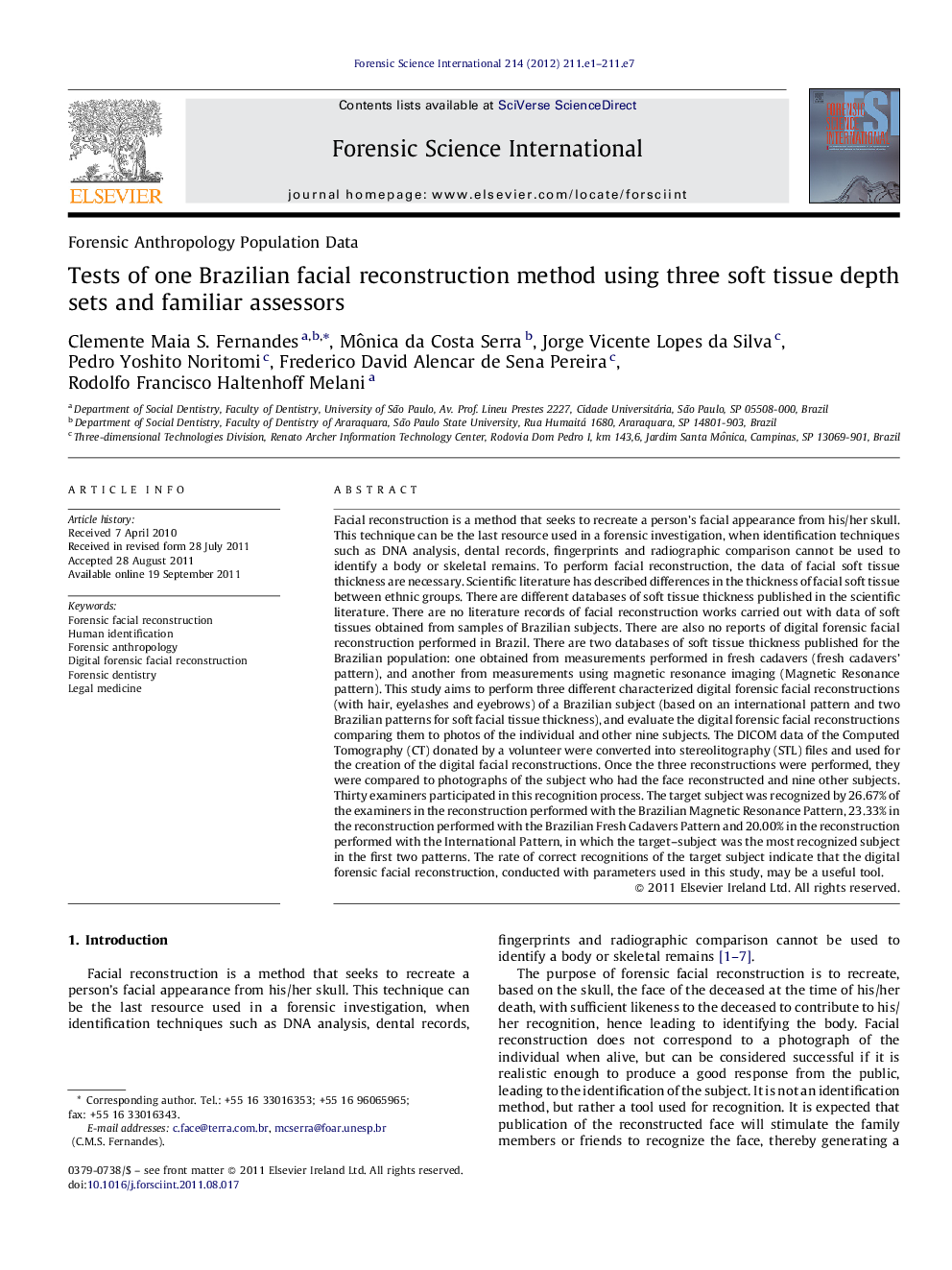| کد مقاله | کد نشریه | سال انتشار | مقاله انگلیسی | نسخه تمام متن |
|---|---|---|---|---|
| 96571 | 160466 | 2012 | 7 صفحه PDF | دانلود رایگان |
عنوان انگلیسی مقاله ISI
Tests of one Brazilian facial reconstruction method using three soft tissue depth sets and familiar assessors
دانلود مقاله + سفارش ترجمه
دانلود مقاله ISI انگلیسی
رایگان برای ایرانیان
کلمات کلیدی
موضوعات مرتبط
مهندسی و علوم پایه
شیمی
شیمی آنالیزی یا شیمی تجزیه
پیش نمایش صفحه اول مقاله

چکیده انگلیسی
Facial reconstruction is a method that seeks to recreate a person's facial appearance from his/her skull. This technique can be the last resource used in a forensic investigation, when identification techniques such as DNA analysis, dental records, fingerprints and radiographic comparison cannot be used to identify a body or skeletal remains. To perform facial reconstruction, the data of facial soft tissue thickness are necessary. Scientific literature has described differences in the thickness of facial soft tissue between ethnic groups. There are different databases of soft tissue thickness published in the scientific literature. There are no literature records of facial reconstruction works carried out with data of soft tissues obtained from samples of Brazilian subjects. There are also no reports of digital forensic facial reconstruction performed in Brazil. There are two databases of soft tissue thickness published for the Brazilian population: one obtained from measurements performed in fresh cadavers (fresh cadavers' pattern), and another from measurements using magnetic resonance imaging (Magnetic Resonance pattern). This study aims to perform three different characterized digital forensic facial reconstructions (with hair, eyelashes and eyebrows) of a Brazilian subject (based on an international pattern and two Brazilian patterns for soft facial tissue thickness), and evaluate the digital forensic facial reconstructions comparing them to photos of the individual and other nine subjects. The DICOM data of the Computed Tomography (CT) donated by a volunteer were converted into stereolitography (STL) files and used for the creation of the digital facial reconstructions. Once the three reconstructions were performed, they were compared to photographs of the subject who had the face reconstructed and nine other subjects. Thirty examiners participated in this recognition process. The target subject was recognized by 26.67% of the examiners in the reconstruction performed with the Brazilian Magnetic Resonance Pattern, 23.33% in the reconstruction performed with the Brazilian Fresh Cadavers Pattern and 20.00% in the reconstruction performed with the International Pattern, in which the target-subject was the most recognized subject in the first two patterns. The rate of correct recognitions of the target subject indicate that the digital forensic facial reconstruction, conducted with parameters used in this study, may be a useful tool.
ناشر
Database: Elsevier - ScienceDirect (ساینس دایرکت)
Journal: Forensic Science International - Volume 214, Issues 1â3, 10 January 2012, Pages 211.e1-211.e7
Journal: Forensic Science International - Volume 214, Issues 1â3, 10 January 2012, Pages 211.e1-211.e7
نویسندگان
Clemente Maia S. Fernandes, Mônica da Costa Serra, Jorge Vicente Lopes da Silva, Pedro Yoshito Noritomi, Frederico David Alencar de Sena Pereira, Rodolfo Francisco Haltenhoff Melani,